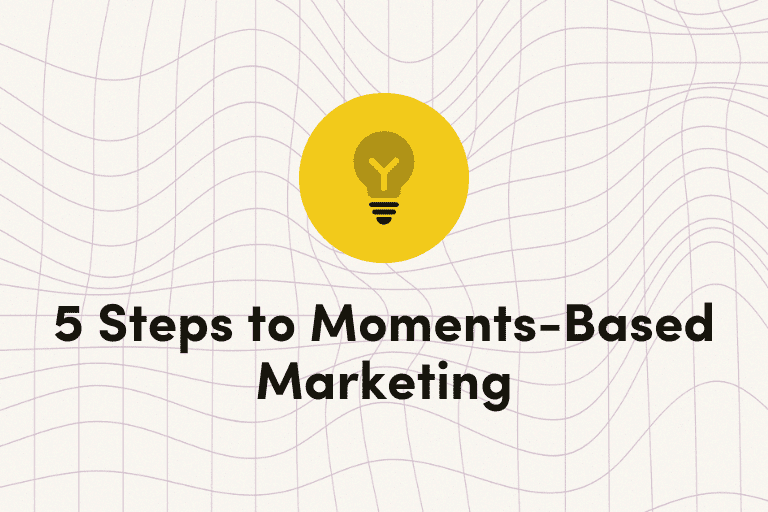Bo Burnham’s Inside has opened the door to a bevy of online reviews—some positive, some negative. The dark comedy Netflix special was created completely during lockdown and features Bo, alone, in an apartment with some scattered peeks behind the curtain into the creative process.
According to The New York Times, “it feels as if he has created something entirely new and unlikely, both sweepingly cinematic and claustrophobically intimate, a Zeitgeist-chasing musical comedy made alone to an audience of no one.” While other reviews may question the authenticity of Bo’s range of emotions as he grapples with depression and isolation—no doubt a discussion for a different time—one sketch stood out to me, as a Content Marketing Manager.
The Social Brand Manager
In this particular clip, Bo’s character explains how he was formerly a comedian but has now become a “Social Brand Manager.” As he continued to satirically explain the importance of cause marketing, especially during the pandemic, he mentions, “It’s also a bit of a scary time because customers expect a lot more from their brands than they did in the past.”
At this point, I scoffed. Not because I disagreed with the sentiment, but because I feel like I’ve written those exact words (and probably have), but not under the veil of satire.
Eventually, it becomes very obvious that he’s poking fun at brands that take stances on social causes while seemingly having no direct connection to that specific cause. He continues, “the question is no longer, ‘Do you want to buy Wheat Thins?,’ for example. The question is now, ‘Will you support Wheat Thins in the fight against Lyme disease?’”
This got me thinking. Has cause marketing become (unfortunately) cliché? How can brands actually make a difference without sounding like a sepia-filtered, dramatically-lit brand manager preaching the importance of picking a side?
The Evolution of Cause Marketing
Before we can delve into the state of cause marketing today, I thought it would be helpful to get some context on how it all began.
In 1983, American Express introduced the concept of cause marketing with their campaign to restore the Statue of Liberty. American Express donated one cent to the cause every time a charge was made on one of their cards. As a result, they increased new cardholders by 45% and increased card usage by 28%.
In 1996, Box Tops for Education launched by including coupons on General Mills cereal. Families would clip the coupons off their cereal boxes, send them to school with their kids and, once turned in, the school could redeem them for funding. Since then, Box Tops for Education can be found on a variety of brands and there is an app parents can use to scan receipts instead of clipping boxes.
More recently, in 2014, CVS announced they would stop selling tobacco products. Leaning away from “convenient store” and towards health care, CVS chose to align their product offerings more closely with their purpose. After CVS made this call, smokers stopped buying cigarettes not only from CVS, but other stores too. According to The American Journal of Public Health, “After CVS’s tobacco removal, household- and population-level cigarette purchasing declined significantly.”
It’s evident that brands can create change, but these campaigns were impactful because of their ties to each of the brands’ values. There’s a clear intention to make a difference through the relationship between these causes and the brands supporting them.
Cause Marketing Intention Matters
For brands to be taken seriously when striving for social change or supporting causes they need to do more than just say they stand behind “X” cause. Bo seemed to be hinting at this in his segment. Brands can preach change ‘til the cows come home, but what good does that actually do? Consumers are getting smarter and catching on to brands that support causes with the singular goal of helping their own bottom lines.
To be a genuine, socially-responsible brand, the cause a brand supports needs to be built into the brand’s foundation. The cause should align with the brand’s purpose. As Paul Mottram, APAC Regional Director for Zeno Group, told PRWeek, “Every organisation has a unique role or value in society, but whether they’ve articulated it or not is another matter. The issues they support, the engagement they have with stakeholders—they need to show it and not just say it.”
When debating if cause marketing is right for your brand, be sure the cause you want to support aligns with your brand at its core. Avoid creating one-off campaigns because they’ll come across as insincere.
Getting Meta
While I’m sure it was not Bo’s goal to have his self-reflective, internet-bashing special woven into a marketing blog, here we are. I fully acknowledge the irony of writing about this particular skit in a marketing blog, but I do think it brought up important points worth addressing.
Brands actually do have the power (and, more importantly, the resources) to make a difference. But, contributing to a cause just to say you contributed is going to be very obvious to consumers. That’s not to say you should invest in trying to appear like you care. What you should do is just actually care.
As the cherry on top of this irony sundae: request a demo to see how Iterable can improve your cause marketing efforts with a cross-channel strategy.































